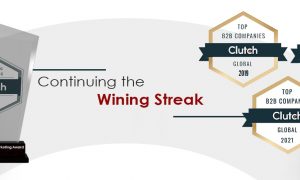PPC (Pay-Per-Click) is an online advertising model where the advertisers pay charges every time a user clicks on their online ads. PPC advertising plays a crucial part in search engine optimization strategy because it brings instant results. Let’s consider that users are searching for a specific product, services, or information online. With the help of PPC, an advertiser can show a targeted ad at the precise moment where this search is happening.
One can accomplish a diverse set of campaign goals with PPC:
It includes
- Boosting sales
- Generating leads
- For brand awareness
Search ads, display ads, and remarketing ads are the different types of PPC ads, and they show up on web pages, web apps, mobile apps, and social media platforms.
Even though executing a PPC is easy, it does take some precise planning and preparation to make it successful. So now, let’s discuss everything you must know about a successful PPC campaign.
How to Build, Execute, and Optimize a successful PPC campaign
Pay-Per-Click (PPC) campaigns work effectively only on stable foundations. It takes adequate planning, executing, and optimizing, which are explained as follows.
Start by Optimizing Your Website
Before you initiate a PPC campaign, take a step back and examine your landing pages since they work in conjunction with your ads. It is crucial because when a visitor clicks on a PPC ad, it’s only because he likes the content approach and certainly wants to know more about the approaching product or service. In case the link they click on takes them to the irrelevant website page, that visitor will possibly bounce.
By this, we can conclude it has, a click on a PPC ad is solely a want to learn more about what the ad was about, which is why it’s necessary to build customized landing pages that correspond with the ad’s content.
Here are some powerful ways you can optimize your site for conversions:
- Creating clear and compelling calls to action
- Developing a simple but appealing site design
- Incorporating attention-grabbing headers
- Writing clear and straightforward content
- Utilizing video and images tactically to hold the attention
Choosing an effective Bidding Strategy
Different types of bidding strategies are possible in PPC, and choosing the best one will rely on your specific budget, experience and goals. Plus, manual and automated bidding are some of the initial options you’ll have to choose. Suppose you are doing PPC for the first time. Go with automated bidding since it helps you execute a successful PPC campaign in a short amount of time. In case you have a low budget, try to start with manual bidding since manual setting enables you to fix a cap on your cost per click. The trade-off with a manual is that you don’t have an opportunity to optimize your bids. Furthermore, there are different strategies you can choose from PPC depending upon whether your goal is to enhance conversions, visibility, or traffic.
Setting a Budget
The best advantage of the PPC campaign is that you can run the advertising even on a limited budget, and you can also retain close control over how much you spend. Suppose you’re new to PPC and play on the safe side. Get started with minimal investment as small as $25. However, running a PPC campaign on a too little budget will not result in enough volume to reach profitability. We suggest you hire the help of an agency for better outcomes. And once you’ve seen your campaign is profitable, you can proceed one step ahead and think about investing a precise budget.
If your firm has not seen any form of improvement to the point you’ve wanted it to, there’s a chance that the marketing strategies you’ve employed are outdated. Suppose you are looking for an effective and reliable marketing strategy. Give a try on Waterfall marketing since its worth considering a refresh.
Waterfall marketing is not new but a reliable strategy used by the most successful marketing agencies and companies worldwide. In case you’re new to waterfall marketing management, read the following to learn better.
What is waterfall planning, and how to use it effectively?
The waterfall planning strategy helps manage marketers’ complexity effectively by prioritising the investment in top-performing channels. It allows marketers to remain financially disciplined and help them concentrate wholly on results. Google says the waterfall planning strategy runs uniformly well on small and big budgets and local and international campaigns.
The waterfall planning method is titled following a waterfall. A body of water that runs downwards means the water flow starts at the top of the model and ends at the bottom, reaching several vital points along the way. Linear and sequential, the method flows steadily downward, waterfall fashion, through set phases. These phases include Conception, Initiation, Analysis, Design, Construction, Testing, Implementation and Maintenance.
Waterfall marketing strategy is acknowledged as ideal for businesses with highly structured settings and conditions, where changes after-the-fact would be cost-prohibitive. Another pro of Waterfall planning is it helps facilitate departmentalization and managerial control and enables schedules to be set with deadlines for each development stage towards the development process.
Research on Keywords
Keyword research is an indispensable element of a PPC campaign because the keyword you prefer helps the search engines know when to promote your ads. Choosing the right keywords enables you to connect with your audience, and that relevancy will magnify the effectiveness of search ads.
Tips for selecting the right keywords:
- Observe what your target viewers are searching on
- keep an eye on your competition’s work
- Be more precise with your keywords
- Periodically analyze how your keywords work
The more reliable your keywords directly result in more clicks. On the other hand, the negative keywords are also as crucial as everything since they keep you away from appearing in irrelevant searches and irrelevant clicks.
Call to Action (CTA)
Before initiating the Call to Action (CTA):
- Conclude yourself on what goal are you trying to accomplish with your ad and ensure your target audience will receive what they need.
- Make sure you create the CTA around these two things.
- Tell them what they’ll get when they click your ad and deliver what you promised.
A successful CTA call urges the visitors to interact, chat, call now, or a form to fill out.
Testing
Once the PPC ad campaign is up and running, your work is not done. It is when you start to track and evaluate the performance following the results. A/B testing will be the best possible way to modify and see which one gets the best results. And once the final decision was made clear, cancel the non-producing ad not to waste money.
Conclusion:
Running a PPC campaign isn’t overly complicated, but it does demand some understanding and awareness of how the ad works. PPC is a technique that only becomes more rewarding, the more effort you put into it. Suppose you need to get the most beneficial ROI from your efforts. Hiring an agency will be the most becoming option. Because since your ad is launched, they’ll track, measure, test, and tweak to ensure that your PPC attempts to deliver the best traffic, conversions, or leads you were hoping for.
























